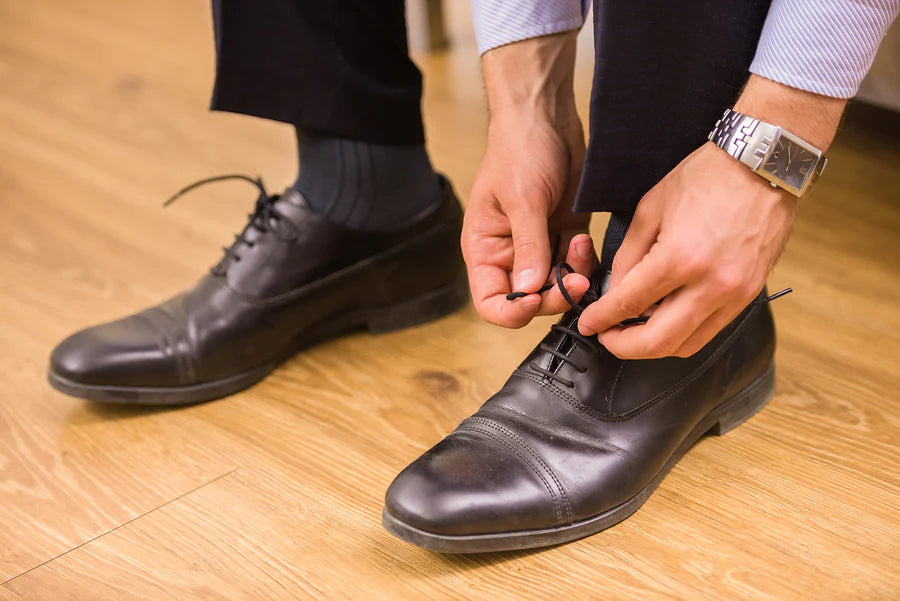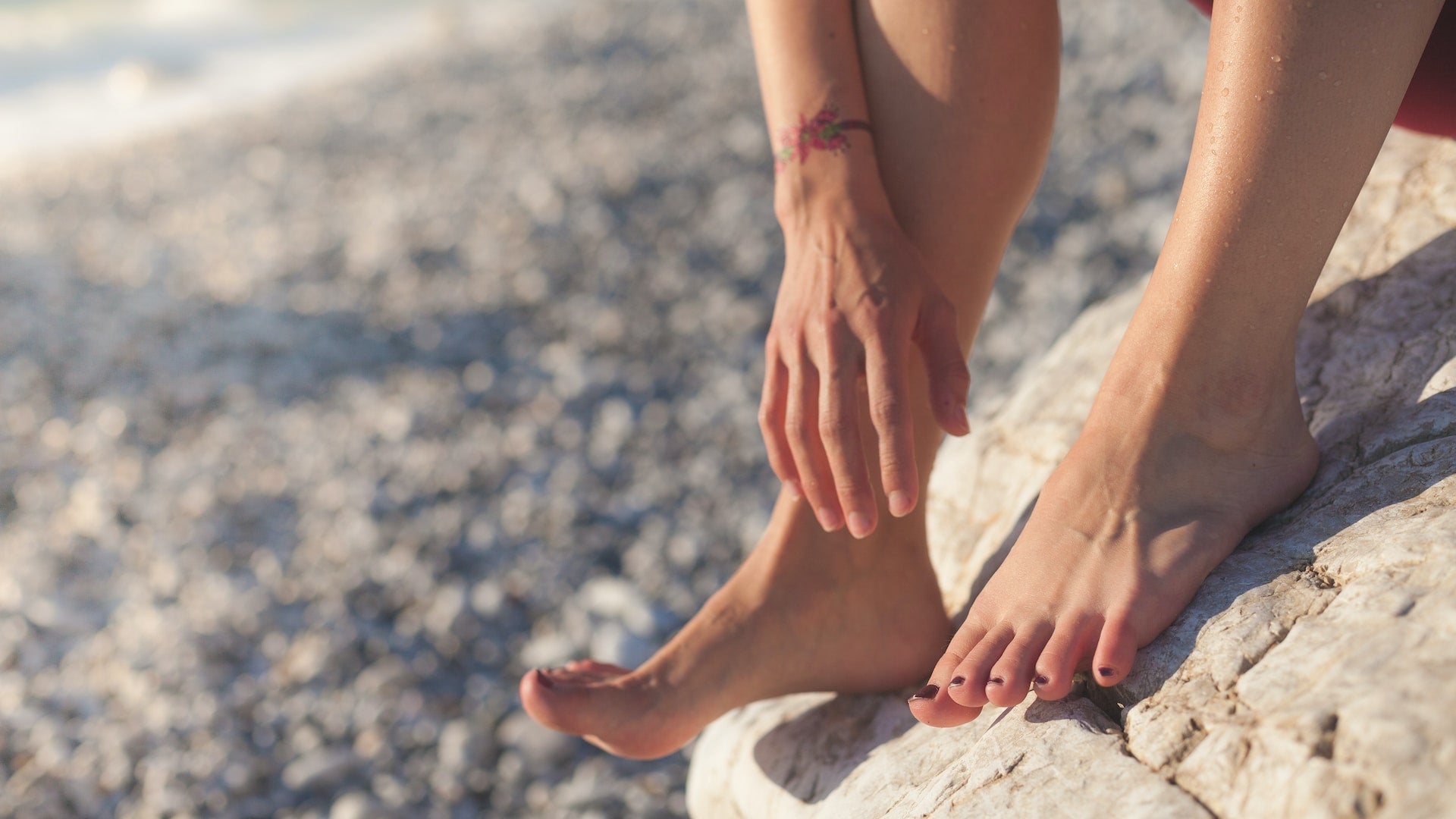
In a world where comfort and hygiene are paramount, the demand for antibacterial socks is on the rise. These innovative socks are designed to combat foot odor and bacterial growth, offering a solution for those with sweaty feet.
In this guide, we'll explore the benefits of antibacterial socks, the materials that make them effective, and how to choose the best ones for your needs.
Whether you're seeking everyday comfort or specialized options for specific conditions, this guide will help you step into freshness and comfort.
What Are Antibacterial Socks?
Antibacterial socks are becoming increasingly popular as they prevent unpleasant odors caused by the growth of fungi and bacteria. Unique materials like copper or silver nanoparticles used in these socks have antimicrobial agents that make it difficult for microorganisms to thrive in warm and moist conditions.
How Effective Is Antibacterial Footwear?
Antibacterial socks can help reduce foot odor and prevent bacterial growth. Moisture-wicking socks made from wool or synthetic fibers keep feet dry and comfortable. Antimicrobial socks containing silver or copper can effectively combat odor-causing microbes.
Proper foot hygiene and suitable shoe choices are also crucial for overall foot health. Antibacterial footwear combined with moisture-wicking and breathable materials can effectively manage foot-related concerns.
Best Antimicrobial Socks
Quarter Cut Diabetic Socks
Low Cut Diabetic Socks
Best Socks for Odor Control
Low Cut Athletics Socks
No Show Athletics Socks
Best Socks to Keep Feet Dry
Quarter Cut Hiking Socks
Crew Cut Hiking Socks
Which Material Is Best for Sweaty Feet?
When searching for the best material to keep your feet dry and comfortable, it's important to consider moisture-wicking and breathable fabrics. One top contender is merino wool, known for its superb moisture management capabilities and ability to regulate temperature. The natural fibers of merino wool have a unique structure that absorbs moisture while keeping your feet odor-free.
Socks made from nylon or polyester blends also effectively manage sweat due to their quick-drying properties and ability to wick away moisture. It is important to avoid cotton socks, as they retain moisture and create a damp environment conducive to bacterial growth.
Are Cotton Socks Better for Sweaty Feet?
Cotton tends to trap moisture instead of wicking it away from the skin, leading to discomfort and increasing the risk of foot odor or fungal infections. To combat this issue, opting for socks made from moisture-wicking materials like merino wool is a good idea.
These materials are breathable and pull sweat away from the skin, resulting in drier feet that are less prone to odor-causing bacteria or fungal growth. Advanced technologies like mesh panels or strategic cushioning can enhance ventilation and improve overall comfort.
What Type of Sock Is Best for Sweaty Feet?
Look for socks with moisture-wicking properties that can effectively draw sweat away from your skin. If you have particularly sweaty feet, it is advisable to choose socks made from breathable materials such as bamboo or merino wool, as these natural fibers are known for their excellent moisture management capabilities.
Additionally, socks with mesh panels or ventilation zones can enhance breathability and airflow, reducing the chances of excessive sweating. The thickness of the socks is also an important consideration.
While thick socks may be suitable for colder weather, they can contribute to increased sweat production. Opting for thinner, lightweight socks can provide better airflow and prevent excessive sweating.
It is also recommended to seek out antimicrobial socks that inhibit the growth of odor-causing bacteria or even fungi that could lead to athlete’s foot.
Why Do My Feet Stink Even with New Socks?
Foot odor can be caused by sweat and bacteria buildup. Look for socks made from breathable materials like merino wool or bamboo that help regulate temperature and wick away moisture. Antimicrobial socks with silver or copper ions can also reduce bacterial growth and odor.
Maintain good foot hygiene by washing your feet daily with antibacterial soap and drying them thoroughly. Applying talcum powder before wearing socks can also help absorb excess moisture.
How Do I Stop My Socks from Smelling?
Choose moisture-wicking socks made of bamboo, merino wool, or synthetic blends to prevent bacteria buildup that causes odor. Look for antimicrobial socks with silver or copper ions for added odor control. Wash socks following care instructions and avoid fabric softeners.
Maintain good foot hygiene by washing feet thoroughly with soap and water daily and drying them before putting on clean, antibacterial socks. See antibacterial socks as part of an overall approach and consult a healthcare professional if necessary.
Enjoy fresh, comfortable feet with the best anti-odor sock options and personal hygiene practices.
Conclusion: Copper Socks Are The Best Antibacterial Socks
Are you searching for the best antibacterial socks on the market? Look no further than copper socks! These socks offer a multitude of benefits for individuals seeking optimal foot hygiene. They actively work to reduce moisture buildup and prevent unpleasant odors, making them a great option for those struggling with smelly and sweaty feet.
Copper-infused fabrics have antimicrobial properties that help eliminate bacteria that thrive in damp environments, keeping your feet dry and fresh throughout the day. Copper socks excel as the best anti-odor socks because they wick away moisture from the skin's surface, preventing bacterial growth that causes foul smells. They provide a comfortable solution for individuals with stinking or cold, sweaty feet.
With copper-based socks, you can confidently bid farewell to stinking or cold sweaty feet woes forever!











Leave a comment
This site is protected by hCaptcha and the hCaptcha Privacy Policy and Terms of Service apply.